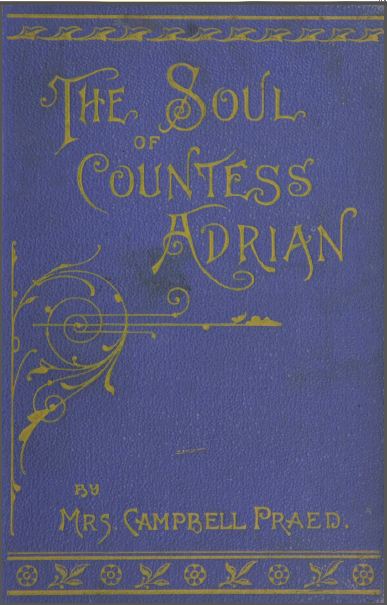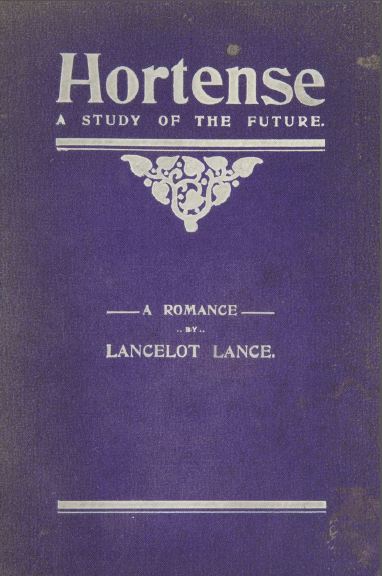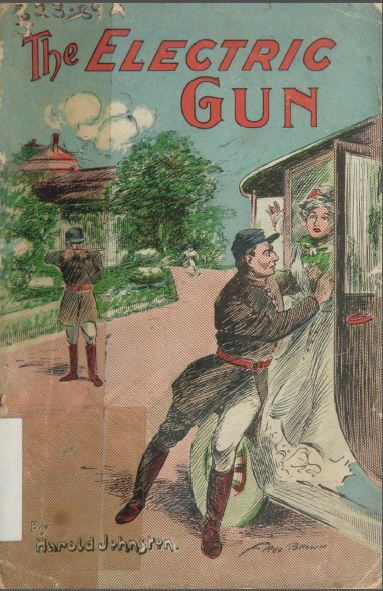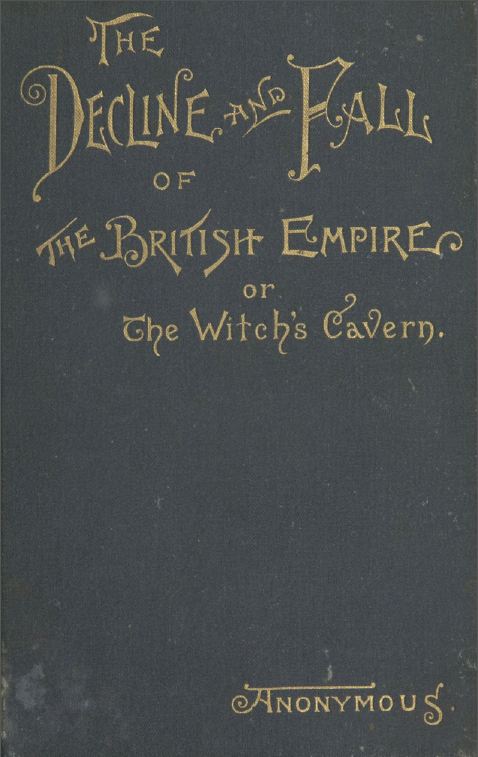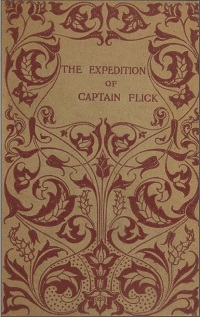AustLit
-
From pantomimes to films, poems to novels, plays to radio serials, Australian writers have dabbled deeply in the possibilities of speculative fiction–horror, fantasy, and science fiction all make their presence known on AustLit.
Over the coming months, AustLit is improving the way in which its full-text collections are delivered to our users, in keeping with the wholesale restructure of the database.
To celebrate both AustLit's full-text content and popular fiction on the database in general, this page offers a taste of the strange and wonderful speculative-fiction novels that will become available through AustLit over the coming months.
Below, you'll find information, reviews, and links to the PDFs for six full-text novels that range in content from voluptuous vampires to suspicious socialists, from obscure occultists to salty sea captains–sometimes in the one novel.
-
Doctor Nikola
In 1896, Guy Boothby published Doctor Nikola, centred on an occultist anti-hero seeking world domination, as is the way of occultist anti-heroes.
Doctor Nikola had first made his appearance in A Bid for Fortune (serialised in the Windsor Magazine in 1895), which was itself filmed in 1917 as A Bid for Fortune. This sequel, Doctor Nikola, follows on from the events of A Bid for Fortune. An 1897 review in the Queenslander notes:
In "A Bid for Fortune" Mr. Boothby told us of the superhuman efforts exerted by Dr. Nikola to obtain possession of a certain little Chinese wand, and which was apparently valueless except as a curiosity. The reason for the unscrupulous doctor's pertinacity is not apparent until we read the sequel, to which the name of the hero has been given. In "Dr. Nikola" the doctor and one Wilfred Bruce, a young Australian, go through a series of "hair-raising" adventures in their endeavour to get to a certain Buddhist monastery In the heart of China. There exist in that monastery certain treasures which Dr. Nikola is very anxious to lay his hands upon, and possessed of which he can do more than any other man.
Even before his possession of the monastery's treasures, Dr Nikola can do more than any other man, because, as the reviewer points out, 'Dr. Nikola is next door to a wizard. He is endowed with the reasoning power of Sherlock Holmes and the deftness of a conjuror, and seems to have a suspicious acquaintance with the black art itself.'
To tell you more would be to spoil the pleasure of your reading.
To find out what Dr Nikola discovered in that remote Chinese monastery, click here to view to full text. (Note: file is 54MB).
-
The Soul of Countess Adrian
In 1888, Rosa Praed serialised The Soul of Countess Adrian in a periodical called The Gentleman. In 1891, the work was published in novel form, and the reviews were delighted with a novel that 'relates the mis-adventure of a massive and voluptuous countess', as the reviewer for the South Australian Chronicle puts it.
As the reviewer outlines in detail, Countess Adrian, failing to inspire passion in 'Mr. Lendon, A.R.A.', possesses the body of the woman with whom Lendon is in love, young and puritanical actress Beatrice Brett, with terrible consequences: 'Instead of being the simple innocent genius to whom he proposed, Miss Brett has become a painfully forward and shocking minx'.
Fortunately, an occultist (but not the ambitious Dr Nikola) is on hand to provide what the South Australian Chronicle reviewer emphasises is an important moral:
Lots of evil spirits are, according to Professor Challis, temporarily in full possession of human bodies. When your dearest friend completely changes his temperament and behaves like a demented idiot don't put it all down to drink or love sickness, but promptly exorcise the demon by calling upon it to come out and go to—I mean go home. Your friend will either get well promptly or do other things. If he does other things you can buy a box of ointment, and whilst rubbing it into the abraised portions of your anatomy console yourself with the reflection that you meant well.
To find out whether Professor Challis successfully exorcises The Soul of Countess Adrian, click here to view the full text. (Note: file is 28MB.)
-
Hortense: A Study of the Future
Hortense: A Study of the Future appeared in 1906 under the pseudonym 'Lancelot Lance'–the only novel that was to appear under this pseudonym.
According to the review published in Border Watch, the novel 'deals with a stage of the future world's history when air ships are to be as common as sea-going ships, and wireless messages will have displaced telegrams'.
During the course of his adventures, Sydney gem merchant Homfrey Howard comes across two brothers and a sister, shipwrecked and isolated for years on Lava Island in the Pacific Ocean. One of the brothers, Alan Edgecombe, returns to Sydney with Homfrey, and becomes the target of a 'persevering and unscrupulous' widow called Hortense, despite Alan's own desperate attempts to come to a better understanding with a Miss Viola Colonna.
But how do we get from this point to the stage where, in the reviewer's words, we find that Hortense 'has set up on Africa as a sorceress'?
To find out how Hortense sets herself up as a sorceress, click here to view the full text. (Note: file is 44MB.)
-
The Electric Gun: A Tale of Love and Socialism
The Electric Gun, published by Harold Johnston in 1911, is the only work in the AustLit database to be sub-titled 'A Tale of Love and Socialism', which probably isn't all that surprising a piece of trivia.
According to the reviewer 'Merrigang' in the Sydney Stock and Station Journal, the book is
a bit of fiction that is not only out of the track of ordinary stories, but which is startlingly attractive and so possible as to make the reader heave the sigh of satisfaction that one looses on awakening from a horrible dream.
This tells us more, perhaps, about the reviewer's political leanings than it does about the novel.
Indeed, most contemporary reviews focus more on the novel's approach to socialism than on the plot, but 'Merrigang' does assure readers that it 'uses up 258 pages, and there is not one dull line in the lot.'
To find out what actually happens in The Electric Gun, click here to view the full text. (Note: file is 45MB.)
-
The Decline and Fall of the British Empire; or, The Witch's Cavern
In 1890, Anglican minister and journalist H.C.M. Watson anonymously published a science-fiction novel called The Decline and Fall of the British Empire; or The Witch's Cavern.
Set in 2989, the novel is a stroll (shown through the eyes of Melbourne University student William Furley) through modern Australia and its capital, Eyretown, and then to 'Old England', where in London ('a small town badly built', says the reviewer for the Morning Bulletin), Furley wanders into 'Belgravia Forest'.
Here, says the reviewer, he
eventually found his way into a witches' cavern. A beautiful woman took him by the hand, led him through the winding of the cave, and threw him into a trance. He was transported into the closing years of the nineteenth century, and followed with his own eyes the decline and fall of the empire.
In his trance, Furley experiences the many shifts of the British Empire, from revolution and declining populations to its 'present state' of dilapidated villages and packs of ravening wolves.
How many other novels out there include both socialist revolutions and witches?
To experience The Decline and Fall of the British Empire, click here to view the full text. (Note: file is 48MB.)
-
The Expedition of Captain Flick
Fergus Hume is best known today, perhaps, for The Mystery of a Hansom Cab, but he wrote a wide range of speculative-fiction novels, including 1896's The Expedition of Captain Flick, a 'lost race' novel starring a salty sea-captain–or, as the reviewer for the Western Mail phrases it, 'adventurous, free-booting sea dog for which the Western counties of England were so famous in years gone by'.
Captain Flick's focus is, according to the Western Mail reviewer
to restore [to] civilization the statue of Aphrodite, carved by Praxiteles for the Temple of Cythera. It is hardly necessary to say, however, that the motive impelling him to this strange quest is not as pure and ardent desire to discharge a signal service to art, but the essentially sordid ambition to obtain possession of the statue in order that he may dispose of it for a huge sum of money.
Although the review does emphasise that the novel contains some 'strange and thrilling adventures', it ends in perhaps the most lukewarm phrase ever used in a book review: 'many are likely to find entertainment in turning its pages for recreation.'
To turn the pages of The Expedition of Captain Flick for recreation, click here to view the full text. (Note: file is 53MB.)
You might be interested in...



